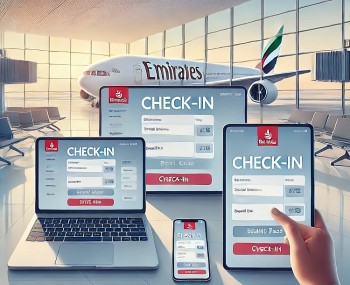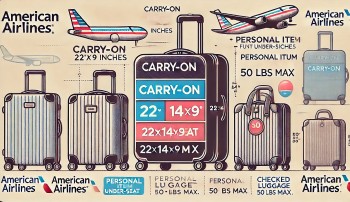Top 10+ Great Infrastructure Projects That Shaped America
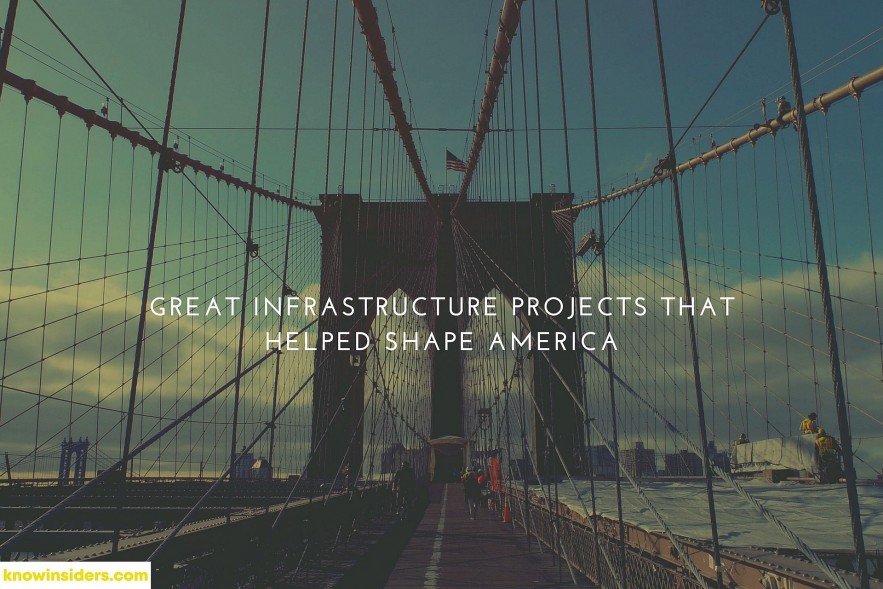 |
| Top Great Infrastructure Projects That Helped Shape America. Photo: KnowInsiders.com |
| Table of Contents |
How Important Is Infrastructure In US History?
The history of infrastructure projects in the United States is extensive and noteworthy, spanning more than a century. Find out more about some of America's most astounding infrastructure accomplishments.
Throughout history, great civilizations have been distinguished by their sound infrastructure. Infrastructure makes people and groups more connected and makes trade in goods easier. The vast city centers of the Roman Empire were supplied with fresh water via aqueducts that extended hundreds of miles. With the construction of the Silk Road, a network of roads linking Europe, Africa, and India to the Far East, the ancient Chinese established one of the largest commercial routes in history.
Today, infrastructure continues to be the foundation of contemporary societies everywhere, including the US. The ambitious public works projects that have been implemented from coast to coast have played a major role in the growth and prosperity of the United States since its founding. Continue reading to find out more about the rich history of infrastructure in the United States and how, as we face the challenges of the modern era, the definition of infrastructure is changing.
What is the first infrastructure project in the US?
The National Road was one of the first significant infrastructure projects in the United States, having been started by Congress in 1806. For settlers looking to start over in the western region of the United States, this road was their main route. Currently known as Route 40, this road remains an essential part of the American transportation network.
The invention of high-pressure steam engines during the Industrial Revolution marked the beginning of a new era for American infrastructure. The ambitious seven-year project known as the Intercontinental Railroad was started by the federal government in 1862 with the goal of building a train link between the East and West coasts of the United States. This project ushered in a new era of prosperity and interstate commerce by enabling Americans to travel across the nation in a fraction of the time and with greater ease and safety.
Top 10+ Great Infrastructure Projects That Helped Shape America
1. The Panama Canal
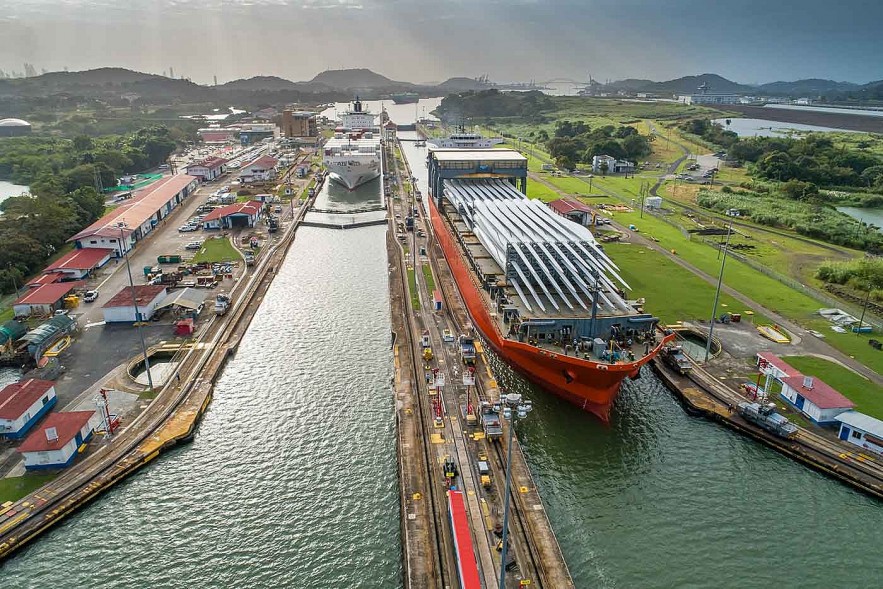 |
| Photo El faro |
One of the biggest building projects in history, the Panama Canal required engineering of a kind never seen before and creative solutions to seemingly intractable issues. The construction of the Panama Canal aimed to establish a direct shipping route between the Atlantic and Pacific Oceans. Previously, ships from the east coast had to travel around South America in order to reach the west coast, a hazardous and time-consuming process!
Did you know that it is one of the rare construction projects in history to be finished in 1914—two years ahead of schedule—despite encountering numerous difficulties? Now let's examine how project managers can be motivated by the building of the Panama Canal!
What were attemps to build the Panama Canal?The Panama Canal was attempted to be built twice. Ferdinand De Lesseps, a French administrator and diplomat who started and oversaw the construction of the Suez Canal, made the first attempt to build the canal. He focused on constructing the Panama Canal following the enormous success of the Suez Canal. However, this new building endeavor was a huge failure for a number of reasons. The first mistake was not planning ahead and not paying attention to professionals. For example, the engineers recommended building a "lock and dam" canal instead of a sea-level canal, which would not be feasible, during the international congress that Ferdinand De Lesseps hosted in Pairs and which was attended by people from all over the world. Later on, though, the decision was made to construct a sea-level canal! This is a classic case of disobeying professional advice and guaranteeing the project's failure from the start when it comes to planning. |
Are there any challenges when building the Panama Canal?There were numerous other difficulties. It was a hot, muggy, and rainy day. Periodically, there were earthquakes and floods, and the soil was unstable. There were many common diseases, including yellow fever, malaria, pneumonia, and the bubonic plague. Because of this, the geological and environmental conditions were different when the Suez Canal was being built. Appropriate risk management was lacking to address the obstacles. Moreover, Ferdinand De Lesseps's team lacked adequate preparation, resources, and personnel who were trained for this kind of situation. Perhaps there was a bit of overconfidence during the construction of the Panama Canal due to the financial and technical success of the Suez Canal, whose construction many believed to be impossible! Ultimately, Ferdinand De Lesseps and his group gave up on the endeavor. Recall that no two projects are alike! Each project is distinct! |
2. The Hoover Dam
 |
| Photo history |
One of the wonders of American infrastructure is the Hoover Dam. Building a dam that could supply electricity to 1.3 million people required tens of millions of pounds of steel and millions of cubic feet of concrete, making it one of the most ambitious projects of the early 20th century. Every year, millions of people come to see the dam. It's even been turned into a song.
Hoover Dam on the Colorado River, one of 492 dams constructed by the Bureau of Reclamation, is a feat of engineering. It took five years to build, from 1931 to 1936, standing 726 feet tall and 660 feet thick at the base. Not only is Hoover Dam a vital piece of infrastructure, but visitors travel from all over the world to see it, as it forms Lake Mead. In addition to providing irrigation water for 2.5 million acres of agricultural land and water to 23 million people in the Southwest of the United States, the dam's power plant serves 1.2 million people in California, Arizona, and Nevada.
How many dams in the US?The nation has more than 91,000 dams for various uses. The potential for hazards is used to categorize dams. A dam with a high hazard potential rating just indicates that there is a chance that it will fail and cause significant property damage and loss of life. It doesn't indicate that the dam will fail more frequently. As development steadily encroaches on once-rural dams and reservoirs, the number of high-hazard-potential dams has more than doubled over the last 20 years. The percentage of high-hazard-potential dams that are covered by an emergency action plan has increased along with the number of these dams. 81% of these dams had a plan in place as of 2018, an increase of 5% from 2015. Regrettably, the Association of State Dam Safety Officials estimates that there are currently more than 2,300 defective high-hazard potential dams because of the lack of investment. Meanwhile, about 3% of dams provide hydroelectric power to homes and businesses; many of these dams are privately owned by utilities and are subject to strict maintenance and operation guidelines. |
3. National Parks Roadways & Recreation Areas
Americans began using the nation's interstate highways more frequently than ever before. Due to the post-World War II economic boom, which gave labor unions and individual professionals leverage to secure higher wages and vacation time for workers, this newfound geographic freedom coincided with unprecedented leisure time.Americans packed their bags, got in their cars, and drove, even though cheap commercial airline travel was still at least ten years away. And a staggering number of them visited the national parks, one of America's greatest assets. The number of annual visitors to national parks increased from just 21 million in 1941 to 56 million by 1955.Regretfully, the parks were merely unprepared for them.
There were few open spaces, a lot of people, and not many passable roads in the parks. While inaccessible areas remained, well, inaccessible, accessible areas became littered and polluted.Thus, in 1956, Colin Wirth, the director of the National Park Service, proposed a ten-year plan that would invest hundreds of millions of dollars in extensive infrastructure improvements. The plan was dubbed "Mission '66" after its anticipated completion date. The endeavor resulted in a significant rise in visitor centers, staffing, maintenance, and access roads that are friendly to the environment.The US government successfully preserved national parklands while assisting Americans in visiting them in a more sustainable and enjoyable manner. This was accomplished in a country that has a dismal record of safeguarding pristine wilderness.
What are the state’s infrastructure priorities for FY2022-2023?The US government unveiled its FY2022–2023 sustainable development plan at the same time that the House of Representatives received the cabinet's updated draft budget for the following year. With EGP 1.1 tn of the total EGP 2.07 tn budget set aside for its investment plans, more than half of this year's budget—a 17.9% increase from last year—will go toward public investment. The budget moves forward with the government's planned infrastructure reforms while reevaluating priorities in light of the unstable global economic environment against which it was drafted. It does this by emphasizing economic recovery and setting a new goal to increase the volume of "green projects." Transport is the single largest recipient of investments: Like the current fiscal year, transport gets the biggest portion of the budget, with EGP 307 bn earmarked for projects in the sector — up about 25.3% from the current fiscal year. Some EGP 176 bn are going to the National Authority for Tunnels, which is overseeing Cairo Metro upgrades as well as the high-speed electric rail Orascom Construction, Arab Contractors, and Siemens are working on, and the monorail, which will connect 6th of October City to Giza and Nasr City to the new administrative capital. The first phase of construction for the electric rail is set to be completed by early 2023. Some EGP 24 bn is earmarked for road developments, up 4% from the current year’s budget. |
4. The US Highway System
President Dwight Eisenhower signed the Federal-Aid Highway Act of 1956 on June 29, 1956. According to Eisenhower, the bill established a 41,000-mile "National System of Interstate and Defense Highways" that would get rid of all impediments to "speedy, safe transcontinental travel," including dangerous roads, inefficient routes, and traffic jams. Advocates for highways contended that "the road net [would] permit quick evacuation of target areas in case of atomic attack on our key cities." The 1956 law stated that the building of a complex expressway system was "essential to the national interest" for all of these reasons.
How long is the US highway system? How many highways?The Interstate System and sections of other operational systems make up the more than 161,000 miles that make up the National Highway System. The state has 45 U.S. highways and 16 interstate highways. East-west Interstate and U.S. Highway routes are assigned even numbers, while north-south routes are assigned odd numbers. Loops and spurs receive three digits that include the number of a U.S. highway or interstate that connects them. |
America's Main Street, or Route 66, is the most well-known highway segment in the country. Every year, tourists continue to flock to this important travel route, which connects Chicago with Southern California. Public access to Route 66 began in 1927, and it soon gained notoriety. But eventually, many sections of Route 66 had to be rerouted and renamed due to the construction of new highways.
The Federal-Aid Highway Act of 1956A significant shift occurred in the summer of 1956 when the US started work on the U.S. Highway Interstate System, another historic infrastructure project. Citizens were able to move easily from state to state thanks to this enormous project that linked the country's major cities. Currently, the U.S. Highway System covers more than 46,000 miles in all directions throughout the nation, and interstate maintenance and expansion projects are still ongoing. After protracted negotiations, the Federal-Aid Highway Act was finally passed in June 1956. The bill approved the building of a 41,000-mile interstate highway system that would run the length of the country. In addition, $26 billion was set aside to pay for them. The law stipulated that the federal government would cover ninety percent of the cost of building an expressway. The funds came from a non-divertible Highway Trust Fund and were derived from an increase in the gasoline tax, which is now 3 cents per gallon instead of 2. The new interstate highways had underpasses and overpasses in place of intersections, making them controlled-access expressways without at-grade crossings. They were made for fast driving and had a minimum of four lanes. In addition to relieving traffic congestion, they were supposed to improve coast-to-coast transportation efficiency, make it easier to evacuate large cities in the event of an atomic attack, and replace "undesirable slum areas" with immaculate ribbons of concrete. |
5. The Erie Canal
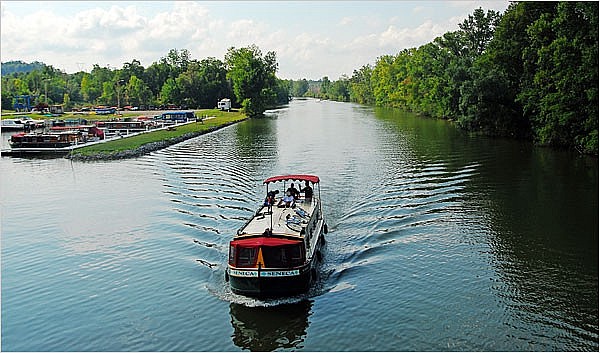 |
| Photo NY Times |
The largest infrastructure project in the history of New York City was built hundreds of miles away from the city.Personal travel was slow and commercial freighting even slower in the early 1800s. In regions without easy access to water, bulk cargoes were transported using ancient techniques like oxcarts.
The net effect was twofold: coastal cities found it difficult to tap into the enormous resources found in the American interior, and prospective western settlers were reluctant to cut ties with important coastal markets.Governor of New York State DeWitt Clinton was a fervent supporter of a 363-mile canal that would connect the Great Lakes at Buffalo with the Hudson River at Albany, seeing this unrealized potential. The seven-year, $7 million engineering project traversed meadows, woodlands, cliffs, and swamps while scaling hills with over 80 lift locks.
| ERIE CANAL WAS DESIGNED BY AMATEURS Although the United States Military Academy at West Point provided the only engineering education available in the nation at the time, construction on the canal got underway in Rome, New York, on July 4, 1817. The majority of the project's designers, who relied on real-world experience and models of European canals instead of formal training, included Chief Engineer Benjamin Wright, surveyor James Geddes, and farmers who lived along the route and helped with construction. Wright and Geddes were both judges. THOUSANDS OF LABORERS BUILT THE CANAL BY HAND Upstate New York's miles of rugged terrain were excavated by hand and horse power in the absence of contemporary construction equipment and technology, which has been utilized to build the largest projects in history. Teams of animals pulled scrapers to move larger material, and Irish, German, and British laborers made up to $1 a day shoveling dirt and rocks by hand. Masons lined the canal's sides with stone. It was said that whiskey barrels were positioned upstream to encourage the laborers, and techniques for uprooting trees, pulling out tree stumps, and submerging hydraulic cement were developed. THE CANAL HELPED SWAY THE CIVIL WAR The former Northwest Territory states—Ohio, Michigan, Indiana, Illinois, Wisconsin, and Minnesota—were more likely to back the union cause once tensions between the North and South flared up because of the economic and cultural ties that bound the Northeast and Midwest together. As the South concentrated on crops like cotton, the Midwest also emerged as the nation's center for food production. The Erie Canal continued to be the main conduit for the Midwest's agricultural resources, providing the Union with a sizable economic advantage. Additionally, as part of the Underground Railroad, escaped slaves utilized the towpath alongside the Canal to reach Canada. THE CANAL HAS AN UNOFFICIAL SONG The Erie Canal Song originated from Thomas Allen's 1905 ode to the Erie Canal, "Low Bridge! Everybody Down!" Legends like Bruce Springsteen and Pete Seeger have covered the song, which was first recorded in 1912. Notable authors from the 19th century who wrote about life along the Erie Canal include Mark Twain, Nathaniel Hawthorne, and Harriet Beecher Stowe. |
6. Transcontinental Railroad
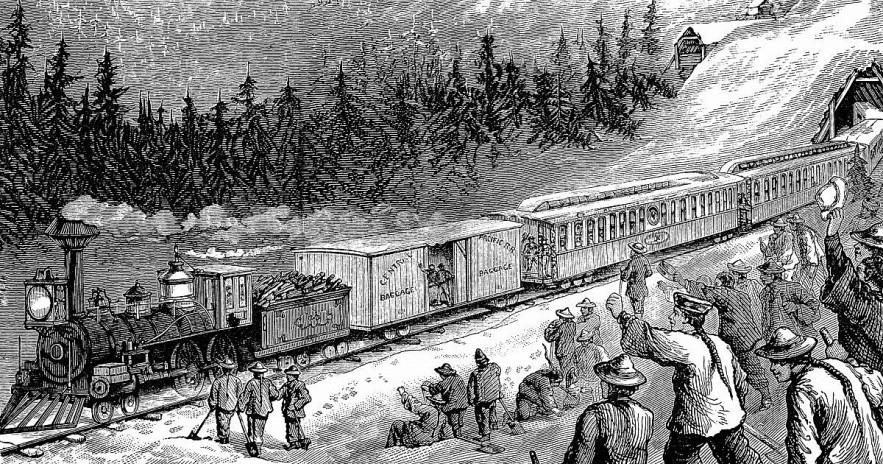 |
| Photo bunk history |
After the first steam locomotive in America was introduced in 1830, there were 9,000 miles of track east of the Missouri River by 1850. An ongoing network of ancillary canals, or marine byways to supplement the Erie Canal's phenomenal success, became increasingly out of date due to rail's rapid growth.
If not for one single event—the discovery of gold in California in 1848—it would have taken longer to connect the entire continental United States by rail. The following westward migration made it possible for California to become a fully fledged state by 1850; prior to that, Texas, Wisconsin, and Iowa were the most western states.
Proposals were made to establish a railroad link between the sister states in order to facilitate the settlement of the large areas that lay between the established states as well as faster, safer access to the Pacific coast.In the midst of the Civil War, which was undoubtedly the country's greatest existential crisis, Abraham Lincoln responded to that call by authorizing what is arguably the largest infrastructure project in American history. Lincoln enacted the Pacific Railway Act in 1862, creating the Central Pacific and Union Pacific Railroads as well as connecting Sacramento, the capital of California, to Omaha, Nebraska, the westernmost rail hub at the time.
The two businesses shot toward one another. They had to repel waves of attacks from Native Americans who were naturally hostile to outsiders while they were building trails for their "iron horses." The 1,912-mile route was completed in seven years by Irish immigrants, Civil War veterans, and about 14,000 Chinese people; 1,200 of them lost their lives in the process. America's westward expansion was greatly accelerated when the 3,000-mile cross-country journey was completed in less than a week instead of several months.
7. New York City Subway
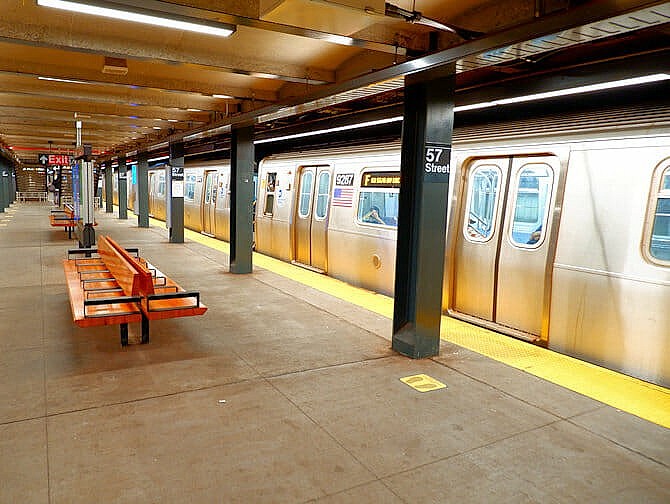 |
| Photo NY City |
On October 27, 1904, the New York City Subway System was inaugurated, comprising of 28 stations. The NYC subway soon overtook the Tremont Street subway in Boston as the largest American subway system, despite not being the nation's first—that was built in 1897. Its original route started at lower Manhattan's City Hall and ended at Harlem's 145th Street Broadway.
In addition to overseeing the opening of other significant structures and infrastructure in New York City, Mayor George McClellan was the first person to operate a subway train. Mayor McClellan was initially in charge of ceremoniously starting the train's engine. However, he enjoyed the job so much that he ended up operating the subway train for the majority of its journey before handing off control to George L. Morrison, the company's professional motorman.
| Key Facts 1. Only 60% of the subway is underground. 2. Even though New York has the second largest population in the world, it ranks seventh for number of subway riders 3. Times Square-42nd Street is New York's busiest subway station, servicing more than 65 million riders a year. 4. If the entire length of NYC's subway tracks (approximately 660 miles) were laid out end to end, they would reach Chicago. 5. For workers who overuse the "my train was delayed" excuse, offices can request verification of delays. 6. From end to end, the A train is the longest route. The 31-mile journey carries passengers from 207th St. in Manhattan, to Far Rockaway in Queens. |
Ghost StationsThe NYC subway system has nine ghost stations. The most stunning is the shuttered City Hall station on the 6 line. It operated from 1904 until 1945. The South 4th Street station in Williamsburg is one of the ghost stations. However, this station was never used; it was never abandoned. A collective of street artists covered it from floor to ceiling in 2012. |
8. San Antonio River Walk
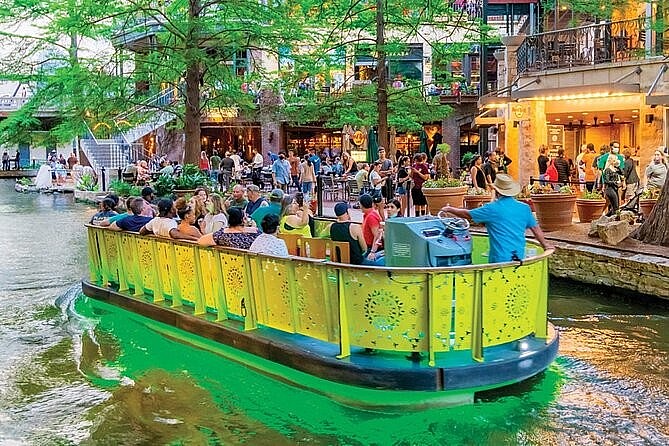 |
| Photo viator |
One of the most popular tourist destinations in the Lone Star State and the city's crown jewel is the San Antonio River Walk, also known as Paseo del Rio or the riverwalk. It is split into three sections: the Downtown Reach, the Mission Reach, and the Museum Reach. It stretches for fifteen miles along the San Antonio River's banks.
The thirteen-mile San Antonio River Walk, also known as Paseo del Rio, winds through downtown San Antonio and ends at the furthest of the city's five Spanish missions from the eighteenth century. It began at Brackenridge Park. Tourist barges that pause along riverside walkways near hotels, restaurants, and shops centered around the Great Bend or Horseshoe Bend can navigate the approximately 3½ mile central section. In 2009, the construction of Texas's sole river lock allowed for navigation northward beyond the original River Walk. Trails for biking and hiking provide access to the remaining portion of the River Walk. The River Walk is one of the most popular tourist destinations in Texas, bringing in millions of visitors annually, and it has influenced riverside construction projects all over the world.
Why is the San Antonio Riverwalk famous?One of the most well-known examples of excellent engineering and architecture is the San Antonio River Walk. The Riverwalk is a destination unto itself, not just a place to visit. From dining, shopping, and nightlife in its busiest area to a plethora of cultural events and historical sites in other sections, this place has plenty to offer visitors. |
9. Nuclear Power Plants
Remarkably, the US came in third place behind the UK (1957) and the Soviet Union (1954) in the nuclear power plant game. But the US quickly rose to the top of the nuclear energy production chart, with 104 operational reactors at its peak in 2012. With 96 reactors currently in operation, America continues to have the most on Earth. At nearly 100,000 MW, these reactors provide 20% of the nation's electricity.
The spread of nuclear power is more significant than the production of electricity, notwithstanding legitimate safety concerns about the production of radioactive waste and, of course, the potential for a meltdown similar to that of Chernobyl or Three Mile Island. A lesson that is extremely valuable right now is that energy can be produced with zero carbon emissions, a lesson that the world learned through the successful construction and operation of the great majority of nuclear power plants.
The US still has a ways to go before it can take the lead in a sustainable energy surge that will be required to avert the worst effects of climate change, even as nations all over the world attempt to increase the production of green energy. Just 20% of the energy produced in America today comes from renewable sources like solar, wind, and hydropower.
In contrast, all of the electricity produced in Iceland and Norway comes from renewable sources, and more than half of the electricity produced in almost 50 other countries comes from renewable sources. US President Joe Biden recently announced plans to significantly increase the production of renewable energy, including plans to use solar energy by 2035 to produce 40% of the nation's electricity.
10. Lincoln Tunnel
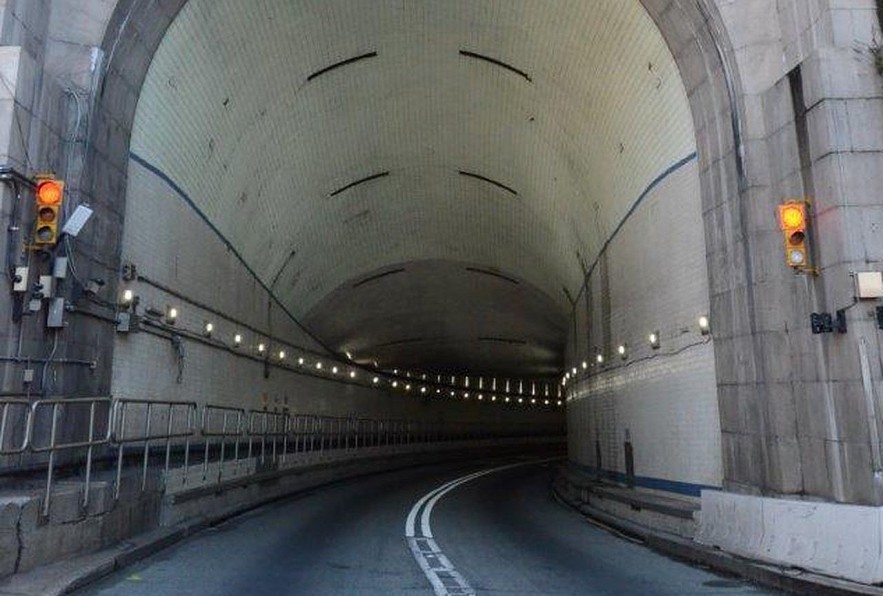 |
| Photo NJ |
The Lincoln Tunnel is a 1.5-mile tunnel that runs beneath the Hudson River, connecting the Manhattan borough to Weehawken, New Jersey. Ole Singstad designed the project, which was financed by the Public Works Administration during the New Deal. The tunnel's construction started in March 1934, and it charged $0.50 per passenger car when it opened for business on December 22, 1937. The construction cost came to $85,000,000. It was originally intended to use two tubes. The second project was put on hold in 1938 but picked back up in 1941. The two-year delay in completion was caused by shortages of metal during the war. Opening on February 1, 1945, it costed eighty million dollars. In 1957, a third tunnel was added.
One of the three tunnels constructed as part of the New Deal to improve traffic access to Manhattan from New Jersey is the Brooklyn-Battery Tunnel, followed by the Queens-Midtown Tunnel and the Queens-Queens Tunnel.
The second underwater route connecting New York and New Jersey is called the Lincoln Tunnel, formerly known as the Mid-Town Hudson Tunnel. This tunnel will provide a continuous highway link between the highway systems of New Jersey and Long Island, along with a vehicular underpass that is being planned for Manhattan Island and the Queens Mid-Town Vehicular Tunnel that is currently being built beneath the East River. Under Project 228 (N. Y.), the first operating unit was constructed. The tunnel, the New Jersey plaza and its approaches, as well as ancillary structures and equipment, were constructed at a cost of roughly $47,000,000.
11. Arroyo Seco Parkway
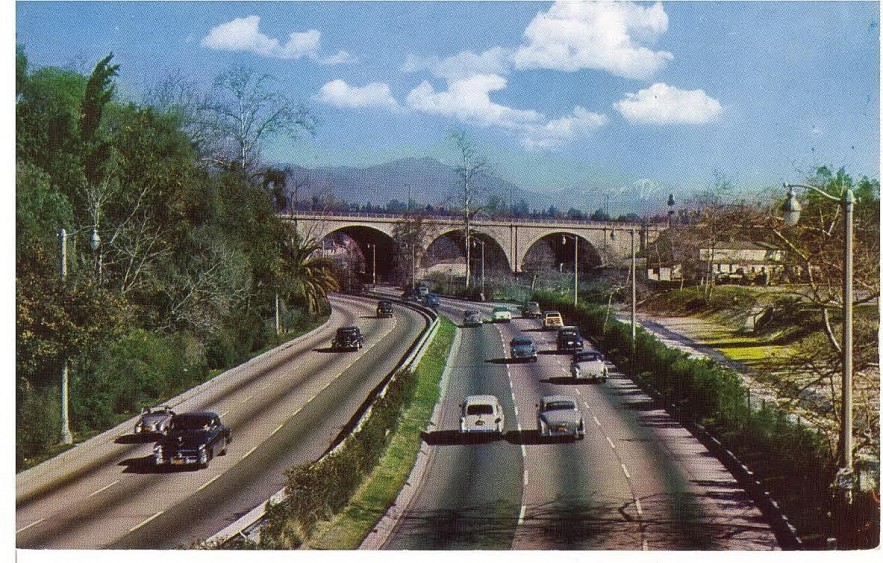 |
| Photo NPS |
The Automobile Club of Southern California persuaded the state legislature to allow rural highways to connect to urban areas, which led to the start of the construction of the Arroyo Seco Parkway in the 1930s. The construction of the 8.2 mile stretch of road, which cost about $6 million, paved the way for the construction of the rest of Los Angeles' extensive freeway network.
The parkway's dual purpose is to promote car travel and provide drivers with breathtaking views of the Arroyo Seco. On December 30, 1940, it was formally opened for traffic. The event was marked by parades, declarations, and a strangely fictitious ceremony in which the Native Americans gave the local government ownership of the land beneath the parkway. Two months after the parkway's construction, worries about traffic congestion surfaced, debunking any notions that the new route would shorten and enhance the travel time between Pasadena and Los Angeles.
USA New Construction Projects
1. Amazon HQ2 (Arlington/Crystal City, Virginia)
Beginning in January 2020, Clark Construction estimates that the first phase of the new Amazon HQ2 office space at National Landing will be finished by 2023. When the office buildings at Metropolitan Park are completed, the contractor plans to crown them off in early 2022, complete the facade installation by summer, and then begin work on the 2-acre landscaped courtyard.
Amazon will occupy two 22-story LEED-certified buildings totaling 2.1 million square feet of office space at the Metropolitan Park campus. Additionally, local small businesses will occupy 50,000 square feet of retail space. The projected cost of Amazon HQ2 is expected to exceed $2.5 billion.
2. Samsung Chip Factory (Austin, Texas)
In late November, Samsung declared its intention to construct a $17 billion semiconductor fabrication plant northeast of Austin in Taylor, Texas. Samsung intends to start building the factory in 2022 and start operations a year later, in 2024. The project was announced in the midst of a worldwide computer chip shortage brought on by COVID-19 supply problems.
The company has not yet disclosed who will be the project's lead contractor. This will be the business's biggest US investment to date. Samsung has been running a chip manufacturing plant in Austin since the late 1990s, and the two businesses intend to pool resources and infrastructure.
3. California High-Speed Rail (Central Valley Phase)
35 active construction sites are currently located throughout a 119-mile stretch of the Central Valley for the California high-speed rail project, which when finished will be the nation's first long-distance high-speed rail line. The State of California's High-Speed Rail Authority estimates that the system, which will use bullet trains capable of 200 miles per hour, will be able to travel from San Francisco to Los Angeles in less than three hours. If extensions are constructed to Sacramento and San Diego, the system's reach would be increased to 800 miles with a maximum of 24 stations. At present, the estimated cost of the Central Valley section is $13.1 billion. The first section will run between Merced, California, and Bakersfield, California, and service is anticipated to start in December 2028, per the rail authority's 2020 business plan.
4. Texas Bullet Rail (Dallas/ Fort Worth and Houston, Texas)
Texas Central Partners and Matthews Southwest Properties want to connect Dallas/Fort Worth and Houston, Texas, with a high-speed rail line.
An astounding $20 billion is anticipated to be spent on the ambitious project. As per Texas Central, the high-speed rail line spanning around 240 miles is expected to provide a travel time of less than 90 minutes, with convenient departures occurring every 30 minutes during peak hours and every hour during off-peak hours.
The project's general contractors are listed as Webuild Group & Lane Construction Corp.; Kiewit Infrastructure South and Mass Electric Construction are also associated with the project.
5. Blue Castle Nuclear Plant (Green River, Utah)
A $20 billion construction budget is possible for Blue Castle Holdings Inc.'s project to construct a two-reactor nuclear energy facility close to Green River, Utah.
Construction bid documents state that the project is anticipated to begin construction in 2022. According to the company, "planning is currently being conducted to reduce the developmental risk for electric utilities and to provide consistent, competitive new baseload electric power generation." Documents dated November 2021 indicate that the project had advanced to the design stage. According to the owners, the project won't be finished until 2030 after it starts.
Blue Castle Holdings claims that the project will increase Utah's electricity production by 50% and that it will use "less than 1% of current water diversion" for its facility. This figure is somewhat lower, according to construction bid documents, with the state's electricity generation expected to rise by 30% with the addition of 2,200 megawatts of electrical capacity.
In conclusion, these outstanding infrastructure initiatives in the US have developed into important transportation hubs, tourist destinations, or public utility projects.
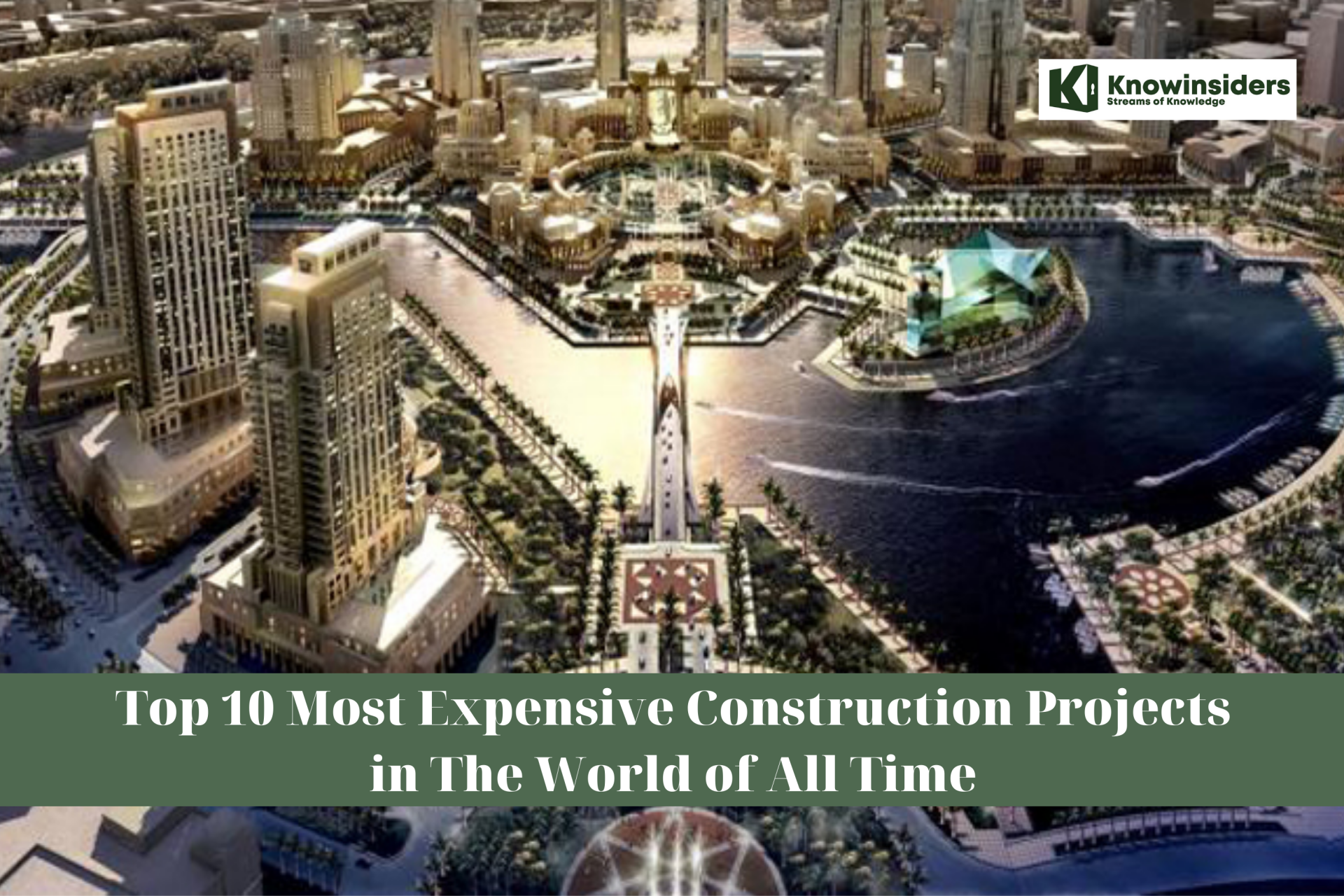 Top 10 Most Expensive Construction Projects in The World Top 10 Most Expensive Construction Projects in The World All around the world previously unfathomable feats are becoming possible, buildings are getting taller and cities more expansive. |
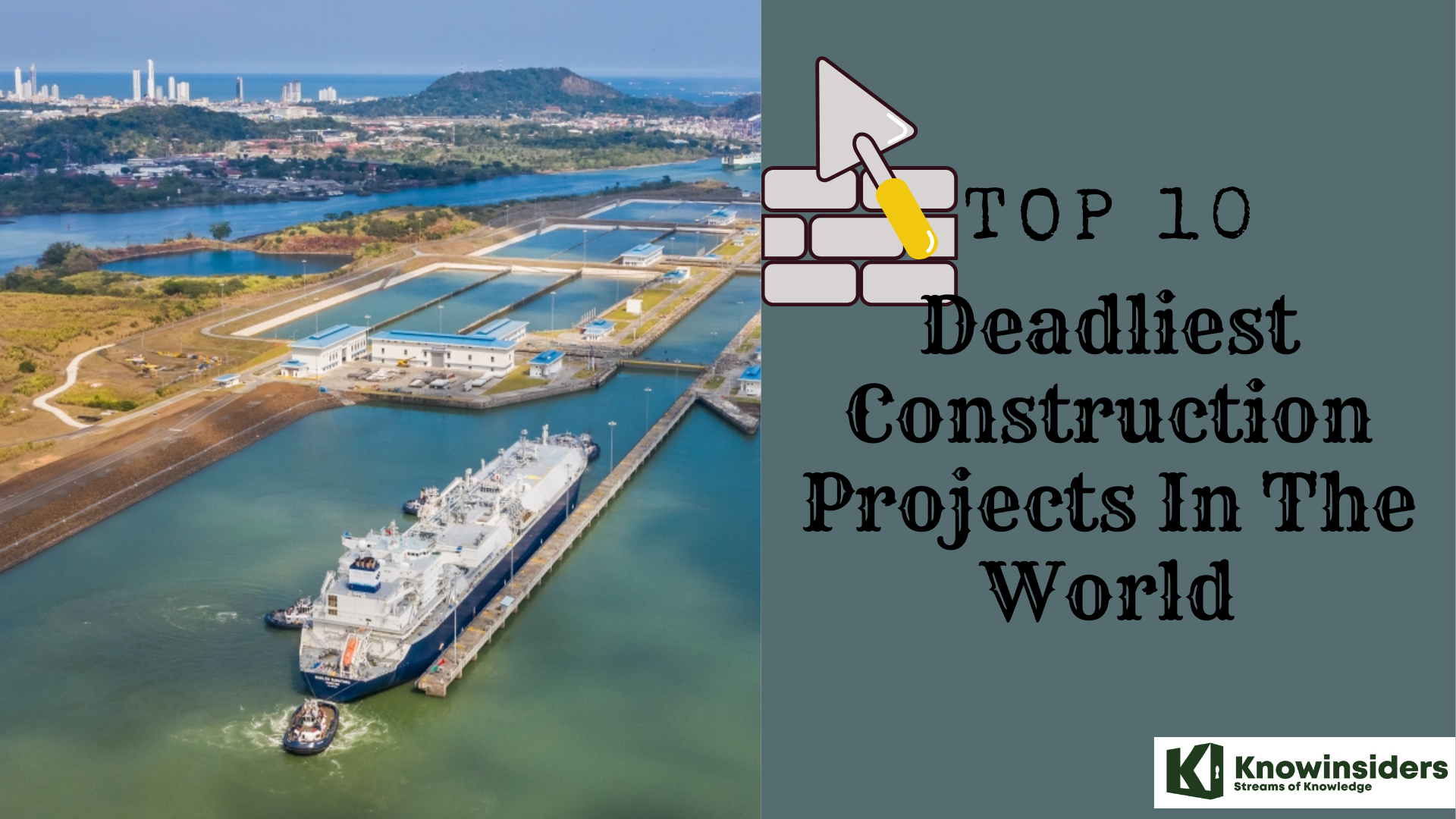 Top 10 Deadliest Construction Projects In The World Top 10 Deadliest Construction Projects In The World Safety is the first priority in any construction projects, but some of them ignored the rule. Take a look at top 10 Deadliest Construction Projects ... |
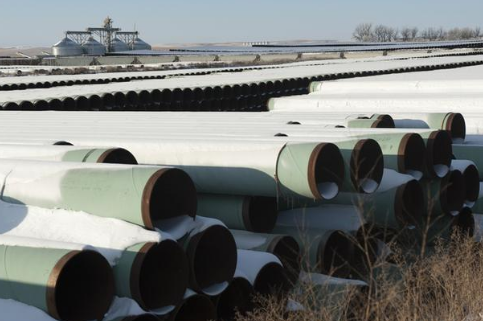 What is status of Keystone XLpipeline project under Biden's Presidency What is status of Keystone XLpipeline project under Biden's Presidency Biden may cancel Keystone XL pipeline permit as soon as his first day in office... |






















